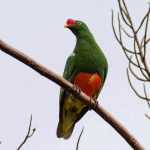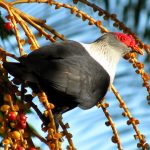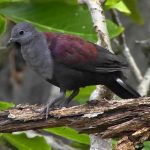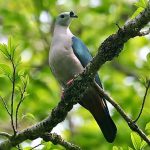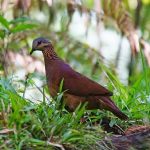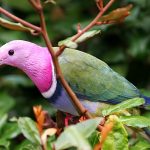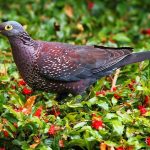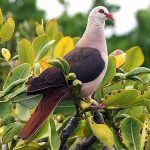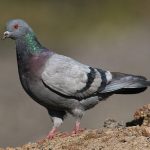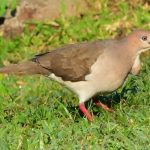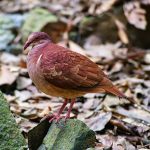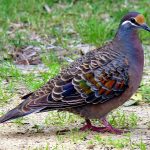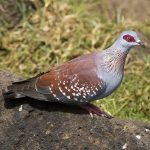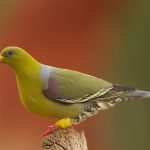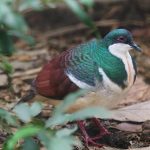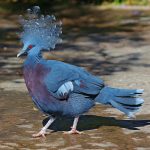Jambu fruit-dove

 |
| Photo by Eddy Lee (Flickr) |
Common name:
jambu fruit-dove (en); pombo-da-fruta-do-jambo (pt); ptilope jambou (fr); tilope jambú (es); jambufruchttaube (de)
Taxonomy:
Order Columbiformes
Family Columbidae
Range:
This species is found from southern Thailand and Myanmar, through Malaysia and into Sumatra, Borneo and a few nearby islands in Indonesia.
Size:
These birds are 23-28 cm long and weigh about 40 g.
Habitat:
Jambu fruit-doves are mainly found in moist tropical forests and mangroves, but are also able to use second growths. They are present from sea level up to an altitude of 1.500 m.
Diet:
They feed on various fruits, which are either taken directly from the tree or by colecting from the ground fruits dropped by hornbills and monkeys.
Breeding:
The jambu fruit-dove is monogamous. The nest is built by the female consisting of a flimsy plastform made of twigs, roots and grasses interwoven with the branches of a tree or scrub. There she lays 1-2 white eggs which are incubated for about 20 days. The chicks are fed crop milk by both parents and fledge 10-12 days after hatching.
Conservation:
IUCN status – NT (Near-Threatened)
This species has a relatively large breeding range and is described as generally uncommon, although locally and seasonally common and very rare in Java. The population is suspected to be declining at a moderately rapid rate, mainly due to habitat loss and degradation, as well as hunting pressure. Forest destruction in the Sundaic lowlands of Indonesia and Malaysia has been extensive, because of a variety of factors including the escalation of logging and land conversion, plus forest fires, and declines are compounded by trapping for the cage-bird trade. However, its ability use of secondary growth and higher elevations implies that it is not immediately threatened.
